Art of Typography: A Guide to Font Design and Typesetting"
Typography and Font Design
Typography is the art and technique of arranging type to make written language legible, readable, and appealing when displayed. It involves choosing typefaces, point sizes, line lengths, line-spacing, and letter-spacing, among other elements. In this article, we will discuss the basics of typography and font design.
What is Typography?
Typography is the art and technique of arranging type to make written language legible, readable, and appealing when displayed. It involves choosing typefaces, point sizes, line lengths, line-spacing, and letter-spacing, among other elements. The goal of typography is to create a hierarchy of information, making it easy for readers to quickly understand and engage with the content.
The Importance of Typography
Typography is essential for effective communication. It can make or break a design, and a good typography can make a design look professional and polished. Good typography can also make a design more accessible and easier to read, which is especially important for people with visual impairments or reading difficulties. Moreover, typography can also add meaning and context to a design, making it more engaging and memorable for the audience.
Choosing a Typeface
A typeface is a set of characters that share a common design. There are thousands of typefaces available, each with its own unique style and personality. When choosing a typeface for a design, it's important to consider the audience, the purpose, and the tone of the content. For example, a typeface with a modern, minimalist design might be best for a tech company's website, while a typeface with a more traditional, serif design might be better for a financial institution's annual report.
Pairing Typefaces
When pairing typefaces, it's important to ensure that they complement each other and create a harmonious design. It's generally best to pair a serif typeface with a sans-serif typeface, as this creates a clear hierarchy of information. For example, using a serif typeface for headlines and a sans-serif typeface for body copy creates a clear distinction between the two, making it easy for readers to quickly understand the content.
Conclusion
In conclusion, typography is an essential aspect of design that can make or break a design. It's important to choose a typeface that is appropriate for the audience, purpose, and tone of the content. By pairing typefaces that complement each other and creating a clear hierarchy of information, designers can create designs that are legible, readable, and appealing to the audience













0 Comments:
Post a Comment